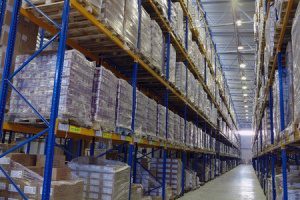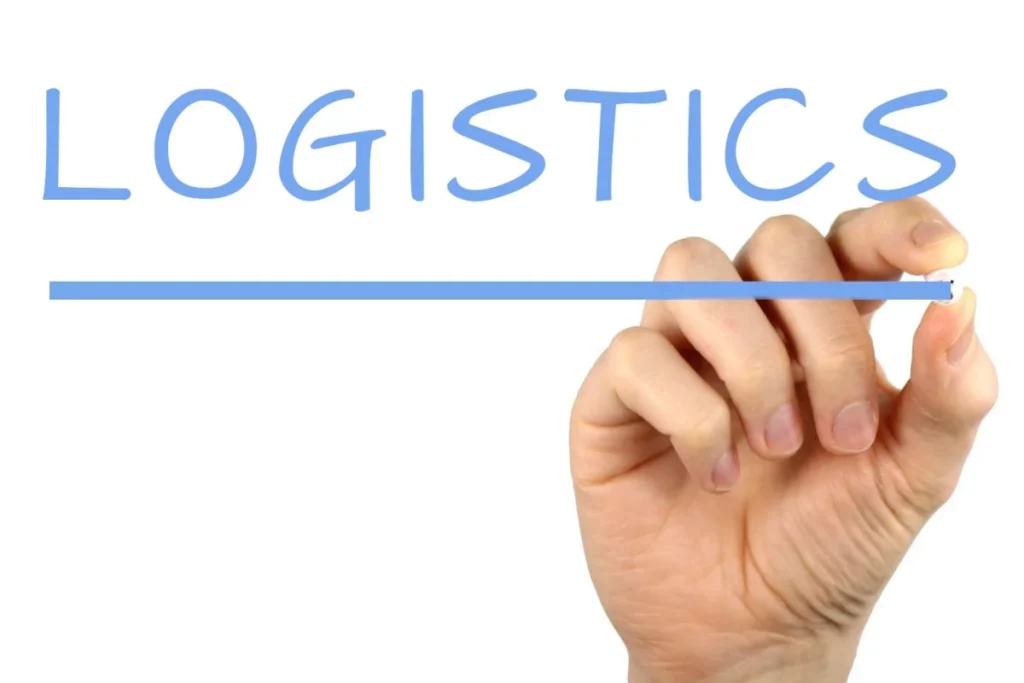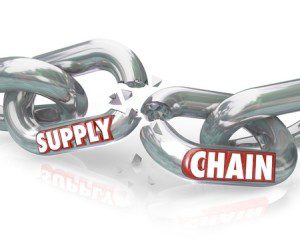 A business owner or manager interacts with people daily that help to improve the company’s bottom line. They have to know the right people and organizations to build relationships with, which will be able to promote the correct interests and help guide them to increased revenue. This is why business partnerships and connections are so important, but for many companies it cannot just be a single person doing this work.
A business owner or manager interacts with people daily that help to improve the company’s bottom line. They have to know the right people and organizations to build relationships with, which will be able to promote the correct interests and help guide them to increased revenue. This is why business partnerships and connections are so important, but for many companies it cannot just be a single person doing this work.
Tag Archives: supply chain
How our Supply Chain Solutions Reduce Expenses and Increase Efficiencies
 Whatever market share a company enjoys, there are always competitors working to grab it. In the whole chain from manufacturer to consumer, the goal should be not just to make the customer happy, but to keep them happy. What keeps them happy is competitive prices and product availability. Supply chain solutions companies ensure that customers who know and like your brand are never disappointed on these two points.
Whatever market share a company enjoys, there are always competitors working to grab it. In the whole chain from manufacturer to consumer, the goal should be not just to make the customer happy, but to keep them happy. What keeps them happy is competitive prices and product availability. Supply chain solutions companies ensure that customers who know and like your brand are never disappointed on these two points.
Continue reading
3PL Links Case Study: Manufacturing (Outdoor Equipment)
 For people around the world, enjoying the outdoors is a critical component of happiness. 3PL Links has had the privilege to work with an entrepreneurial and innovative world leader in the design and manufacturing of ready to assemble outdoor living products for residential customers. This client delivers exceptional play and leisure structure options around the globe to children and adults alike. Operating under three distinctive branded product lines, this client creates products adhering to the highest standards in quality, safety, value, and fun.
For people around the world, enjoying the outdoors is a critical component of happiness. 3PL Links has had the privilege to work with an entrepreneurial and innovative world leader in the design and manufacturing of ready to assemble outdoor living products for residential customers. This client delivers exceptional play and leisure structure options around the globe to children and adults alike. Operating under three distinctive branded product lines, this client creates products adhering to the highest standards in quality, safety, value, and fun.
Much like many companies in the modern economy, they are eager to capitalize on emerging trends in today’s consumer marketplace. For this client, that means having the ability to mobilize resources and engage their supply chain to continually exceed their customers’ demands. This need drove an engagement with 3PL Links.
3PL Links Case Study: Retail (Apparel)
 As the embodiment of modern American style, 3PL links’ largest women’s apparel customer offers impeccably designed clothing that meets and exceeded the needs of today’s women. Faced with explosive growth in Canada, the International Retailer turned to 3PL Links for help with their supply chain management. 3PL Links was faced with a number of warehousing, cross docking, outbound and inbound distribution requirements. Furthermore, 3PL Links introduced the Retailer to the power of 3PL Links’ Vendor Audit Program. The over-arching goal was to optimize processes to improve speed to market, improve outbound freight from Distribution Centre’s to retail outlets, increase visibility on both their shipments and vendors and continually seek innovative ways to reduce logistic-related expenses. Through the use of a Risk Free Assessment, proprietary auditing tools and ongoing freight management program, 3PL Links was able to and continues to meet and exceed the needs of the Retailer.
As the embodiment of modern American style, 3PL links’ largest women’s apparel customer offers impeccably designed clothing that meets and exceeded the needs of today’s women. Faced with explosive growth in Canada, the International Retailer turned to 3PL Links for help with their supply chain management. 3PL Links was faced with a number of warehousing, cross docking, outbound and inbound distribution requirements. Furthermore, 3PL Links introduced the Retailer to the power of 3PL Links’ Vendor Audit Program. The over-arching goal was to optimize processes to improve speed to market, improve outbound freight from Distribution Centre’s to retail outlets, increase visibility on both their shipments and vendors and continually seek innovative ways to reduce logistic-related expenses. Through the use of a Risk Free Assessment, proprietary auditing tools and ongoing freight management program, 3PL Links was able to and continues to meet and exceed the needs of the Retailer.
5 Reasons You Should Consider Warehouse Services from 3PL Links
 When your business is transporting goods from one place to another, it is crucial you have a secure warehouse to place these goods. The warehouse should be guarded around the clock to ensure your goods are not vandalized, damaged or stolen; and if you have special storage needs, such as climate control, the warehouse should be equipped to offer the service.
When your business is transporting goods from one place to another, it is crucial you have a secure warehouse to place these goods. The warehouse should be guarded around the clock to ensure your goods are not vandalized, damaged or stolen; and if you have special storage needs, such as climate control, the warehouse should be equipped to offer the service.
If goods get damaged or a theft occurs, it is not just a monetary loss to your company, it is also is loss of credibility in front of your customers due to delayed deliveries. These are issues that can cost your company dearly, both in terms of money and reputation. You should choose your warehousing partner with care. Without the right warehouse services, your business can suffer in many different ways.
Below are 5 reasons why you should choose professional warehouse services offered by 3PL Links.
- Expertise and Experience
3PL Links employs highly trained professionals who ensure all your logistics supply chain requirements are handled seamlessly. The company brings a wealth of knowledge and expertise and hence, is equipped to provide warehousing solutions to suit your needs and budget. This storage method minimizes risks and also ensures expedient and fast service. You never have to contend with inexperienced and untrained employees which increases the risk of loss and damage. Continue reading
When you should Consider Consulting with a Third Party Logistics Provider

Any company that sells products must have a reliable delivery system in place to ensure that all items are delivered to customers on time and in perfect condition. For this to be possible, the delivery system must include warehousing, picking, packing, and shipping operations, which are gathered under the generic name of logistics.
Unfortunately, managing logistics is a major challenge for many businesses. Without streamlining logistics operations, a company can easily run into cost overruns, which will negatively impact its overall activity. How can you reduce the risk of cost overruns and outright failure? By simply consulting with a third party logistics provider, or 3PL. Continue reading
3PL Supply Chain Management Metrics to Look at
 Supply chain management metrics are designed to give your company the analytical tools to assess the performance of each piece of the supply chain. The matrices should be straightforward to use, but aligned to specific business requirements. Three important matrices critical to effective supply chain management and bottom lines are: carrying cost of inventory, inventory to sales ratio, and inventory turnover.
Supply chain management metrics are designed to give your company the analytical tools to assess the performance of each piece of the supply chain. The matrices should be straightforward to use, but aligned to specific business requirements. Three important matrices critical to effective supply chain management and bottom lines are: carrying cost of inventory, inventory to sales ratio, and inventory turnover.
Carrying Cost of Inventory
The carrying cost of inventory is one of the supply chain management metrics that measures the costs of keeping inventory, whether over the short- or long-term. Carrying cost of inventory can help you to determine expected profits on current inventory, and if more product, or less, is required to ensure income levels or to cover expenses. It can also impact more strategic decision-making like sourcing. Continue reading
Should you Consider Supply Chain Segmentation?
 Business success is contingent on maintaining a competitive edge. Maximizing supply chain activities allows businesses to operate at highly proficient and effective levels. Supply chain management integrates all facets of business operation and production, including product development, procurement, construction, and logistics. Businesses are discovering that they are unable to maximize customer value using a single supply chain strategy. The same supply chain stratagem will satisfy some customers but the desires of other consumers may go unfulfilled, and for others, the costs may be too great. As a business owner, should you consider supply chain segmentation? The answer is yes.
Business success is contingent on maintaining a competitive edge. Maximizing supply chain activities allows businesses to operate at highly proficient and effective levels. Supply chain management integrates all facets of business operation and production, including product development, procurement, construction, and logistics. Businesses are discovering that they are unable to maximize customer value using a single supply chain strategy. The same supply chain stratagem will satisfy some customers but the desires of other consumers may go unfulfilled, and for others, the costs may be too great. As a business owner, should you consider supply chain segmentation? The answer is yes.
Supply chain segmentation means grouping services or faculties together to meet an explicit set of requirements. Segmentation allows businesses to meet their customer needs at the lowest cost. It provides an organizational framework that consistently delivers value and business control the complete life progression of a product. Supply chain segmentation generally follows these steps:
Step One – Group Products and Delivery Channels
The first step for segmentation involves grouping products and delivery methods and creating a matrix, where all combinations are represented. Each combination is considered an individual supply chain. The distinct supply chains are rated using business revenue factors of gross profitability and sales. Continue reading
What Type of Supply Chain Disruptions are a Threat to Your Business?
 Many businesses share common management concerns including potential supply chain disruptions. These common supply chain threats include extreme weather like hurricanes or tornadoes, or natural disasters like earthquakes and floods. Other kinds of disruptions like supplier breaks, labor issues and pricing risks, are perhaps less dramatic, but hold the same potential for damage. For every business, the type and ultimate impact of supply chain disruptions will vary. There are several threats to a business”s supply chain, especially if they rely on transportation.
Many businesses share common management concerns including potential supply chain disruptions. These common supply chain threats include extreme weather like hurricanes or tornadoes, or natural disasters like earthquakes and floods. Other kinds of disruptions like supplier breaks, labor issues and pricing risks, are perhaps less dramatic, but hold the same potential for damage. For every business, the type and ultimate impact of supply chain disruptions will vary. There are several threats to a business”s supply chain, especially if they rely on transportation.
Supplier Breaks
Any manager waiting for a truckload of raw materials originating in a hurricane zone along the Gulf knows that unforeseen disruptions are costly and can potentially put their business at risk. Supplier breaks can arise for a variety of reasons.
Climate change and environmental damage continue to cause supplier breaks because they can lead to swings in the cost of commodities and other materials prices, which can affect your bottom line. For example, changes in climate led to a reduction in grain crops in Eastern Europe, leaving many food manufacturers forced to increase prices to cover the drop in supply and subsequent increase in price. Unanticipated events like explosions in warehouses, business failures, or new regulations can end in supplier breaks too. Continue reading
6 Tips on Enhancing Supply Chain Security
 The supply chain is threatened with insecurity from all directions. Theft, terrorism, and cyber crime are just a few examples of threats faced by goods on transit. Fortunately, there are several simple yet effective ways through which the security of the supply chain can be improved.
The supply chain is threatened with insecurity from all directions. Theft, terrorism, and cyber crime are just a few examples of threats faced by goods on transit. Fortunately, there are several simple yet effective ways through which the security of the supply chain can be improved.
Here are six practices that you should consider if you’re resolute about enhancing your supply chain security.
1. Applying a structured approach
The first step in averting any risk is usually to stay safe: do not expose yourself to the problem. Start by forming a diverse team tasked primarily with managing supply chain risks at the organization. Then you can have all departments within the organization assessing and outlining their specific concerns which are then planned for by this management team. Every department has its own special needs and giving them the opportunity to express their concerns is the best way of identifying and tackling all risks within the entire organization. Continue reading


